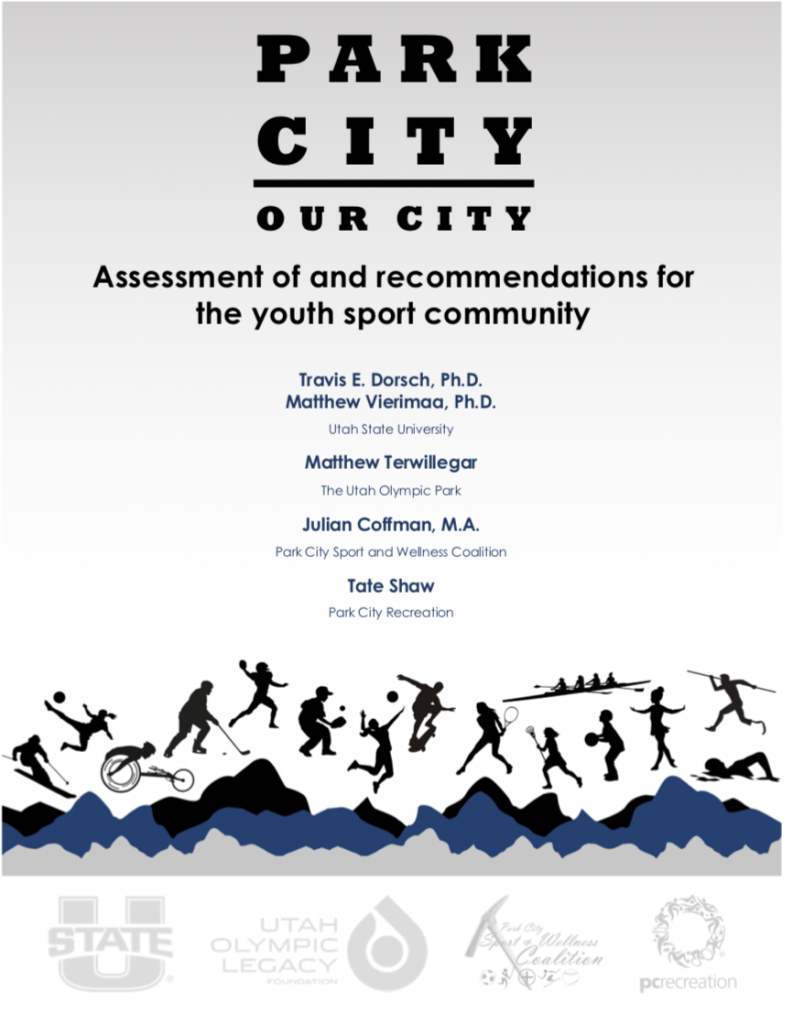Over the course of the past year, Utah State University researchers Dr. Travis Dorsch (Human Development and Family Studies) and Dr. Matthew Vierimaa (Kinesiology and Health Science) collaborated with local youth sport stakeholders on “Park City, Our City,” a comprehensive look into organized youth sport programming in Park City. Commissioned by Matt Terwillegar from the Utah Olympic Park, Julian Coffman of the Park City Sport and Wellness Coalition, and Tate Shaw of Park City Recreation, their comprehensive report found that while the 2002 Olympics were a catalyst that increased participation levels in sport and physical activity in Park City on the whole, “the community’s high-performance culture, growing population, and limited facilities often lead sport organizations to adopt a pay-to-play mentality and encourages early sport specialization.”
Project Description:
Park City, Our City was commissioned by Matt Terwillegar of the Utah Olympic Park, Julian Coffman of the Park City Sport and Wellness Coalition, and Tate Shaw of Park City Recreation. These individuals, in collaboration with Dr. Travis Dorsch and Dr. Matthew Vierimaa from Utah State University’s College of Education and Human Services sought to begin work toward optimizing the design and delivery of organized youth sport programming in the Park City community.
A necessary first step in pursuing this aim was to assess Park City’s current youth sport landscape. Therefore, the purpose of this project was to identify stakeholders’ perceptions of community level factors that have shaped the design and delivery of organized youth sport programming in Park City since Salt Lake City’s hosting of the 2002 Olympic Games. In addition to looking back at the legacy of the 2002 Games, this project also served as an initial opportunity to look forward toward 2030 as key community stakeholders chart a course for the next decade of youth sport delivery.
Nine focus groups were conducted with 11 youth, 10 parents, 13 coaches, and 9 administrators from a variety of recreational, competitive, and elite sport organizations. These focus groups took place in May, July, and November 2018. In each focus group, participants responded to questions regarding their personal philosophies and experiences in youth sport, as well as about characteristics of the Park City community that influence the ways sport programming is implemented and consumed at a local level.
Focus groups were audio recorded, transcribed verbatim, and cross-checked for accuracy by members of the Utah State research team. Transcripts were then analyzed using thematic analysis, resulting in a final framework of 7 overarching categories and 35 underlying themes.
Findings shed further light on the ways the 2002 Olympics have been used as a catalyst to increase levels of participation in sport and physical activity in Park City. Findings also highlight a shared belief among stakeholders regarding the importance of making sport accessible to all, developing physical literacy and life skills, and embracing multi-sport participation. However, the community’s high-performance culture, growing population, and limited facilities often lead sport organizations to adopt a pay-to-play mentality and encourages early sport specialization. This apparent conflict between idealized perspectives about youth sport and the reality of implementing and sustaining sport programming underscores the importance of considering how youth development through sport actually occurs within the Park City community.
This project report is designed to inform decision-making at the community, organizational, team, and family levels in Park City, Utah, and we thank all the community stakeholders who took part as partners and participants!
Download “Park City, Our City”.
